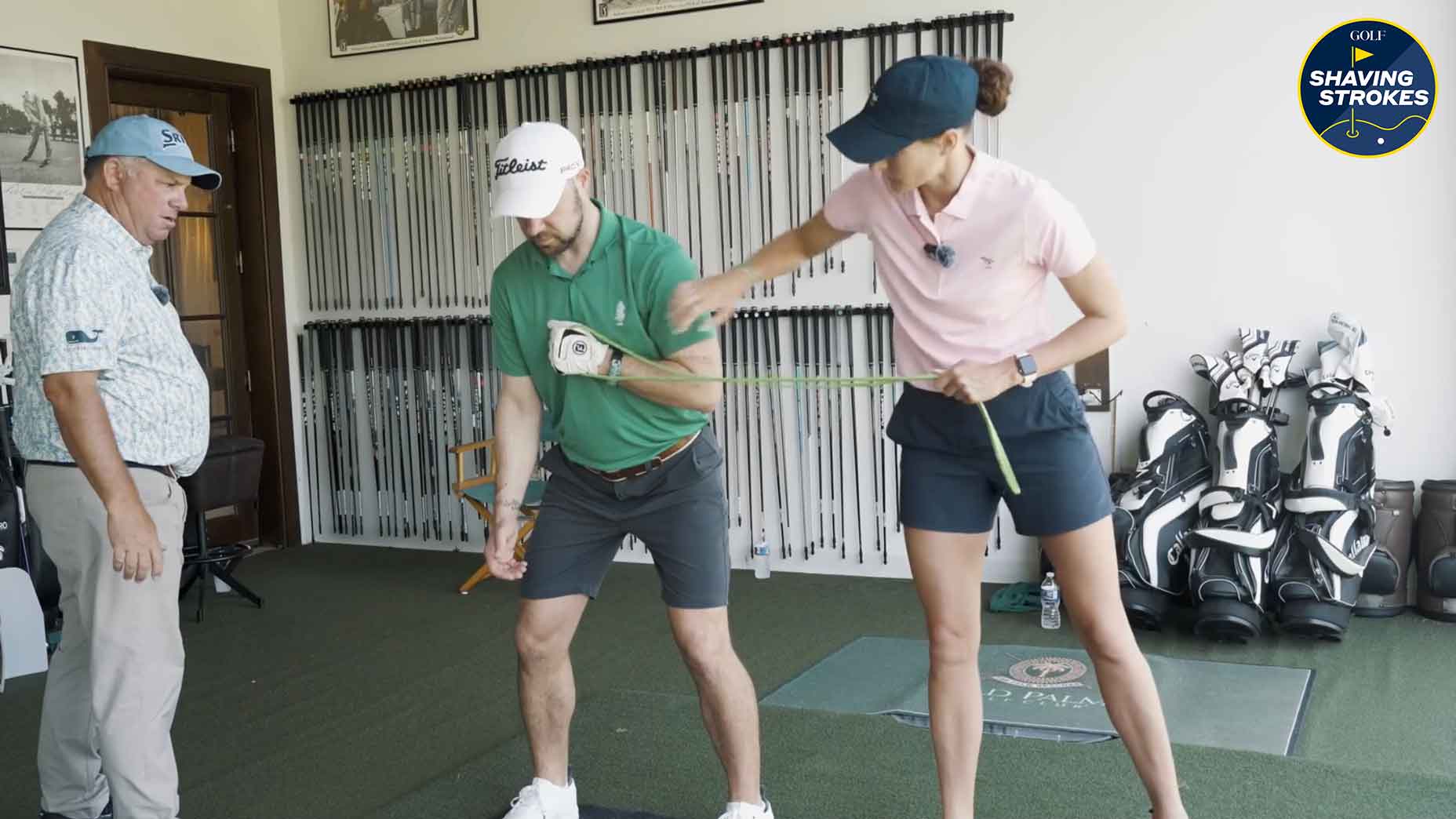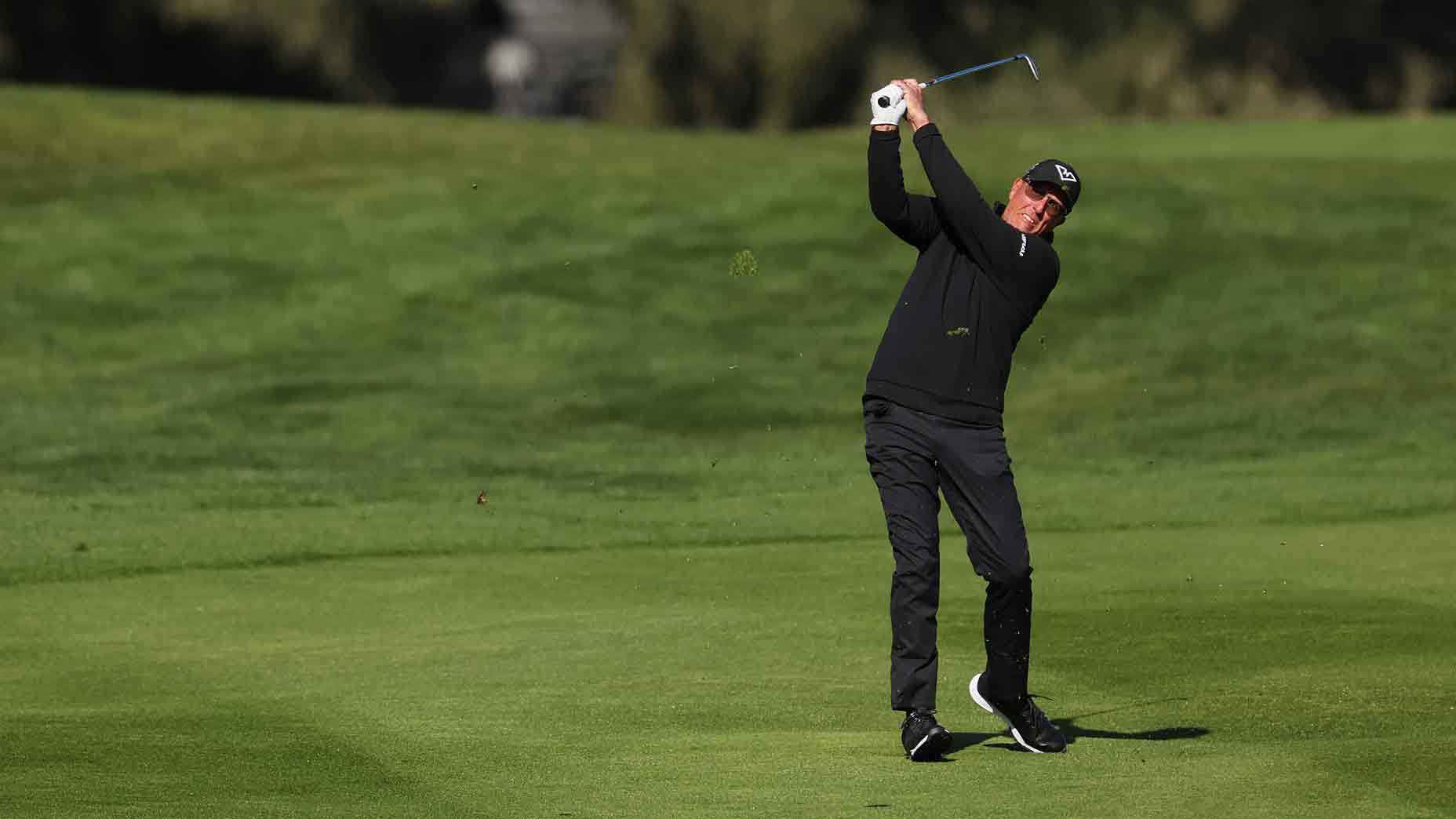1 backswing fix led to much better ball contact. Here’s how
- Share on Facebook
- Share on Twitter
- Share by Email

Just one simple fix led me to better ball contact after finding the low point of the golf swing.
Image via YouTube/DewsweeperTV
Welcome to Shaving Strokes, a GOLF.com series in which we’re sharing improvements, learnings and takeaways from amateur golfers just like you — including some of the speed bumps and challenges they faced along the way.
On my quest to break 80 for the first time in my 28 years of playing golf, I’ve discovered lots of little things in my golf swing that continue to hold me back. When put together, they all add up to inconsistent shots and missed opportunities to shoot lower.
While my golf swing is visibly much better than it was a year ago and I’m striking it pure more frequently, I still have plenty of moments where I fall into bad habits. When this happens, I’ll look over my scorecard after a round and see how a few holes just got away from me.
A topped shot here, a chunked shot there — when these occur 6-7 times during a round, that’s the difference between a mid-80s score and flirting with breaking 80.
Phil Mickelson: The 1 flaw all poor ball-strikers have in commonBy: Nick Dimengo
With the access I’ve got to GOLF’s Top 100 Teachers, I’m lucky to get the best instruction known to man. Sure, it can be a little overwhelming at times — too many cooks in the kitchen can lead to loads of swing thoughts — so I need to pick and choose what works best for my golf goals.
During a recent visit to Old Palm GC in West Palm Beach, Fla., I linked up with top teacher Tony Ruggiero and Morgan Hale to walk me through some swing drills and help me finally improve my ball-striking.
But rather than just have me beat ball after ball, Ruggiero and Hale had me go through a full swing analysis in an attempt to discover what was leading to so many inconsistent shots each round, which is an exercise they’d recommend to sort out regular flaws in the game of tons of amateurs.
I’ll turn it over to Tony to describe the lesson below from his perspective — and what he taught me that could help you, too.

True Spec Fitting
Some drills to help me find the low point of the golf swing
When Morgan and I started our weekend with Nick, we asked the same question — what’s the one thing he wants fixed to improve his game? Nick’s desire and passion to break 80 is widely known, so we quickly found that his one thing was to quit hitting the ball heavy or mishitting shots.
Overall, contact was his major issue. In order to have solid contact, it’s important to be able to understand and find a consistent low point of the swing, ensuring the club hits the turf in front of the ball.
In my experience, when a student struggles with contact, it’s because of a faulty understanding of what a turn or weight shift is. As a result, their spine or the post of the swing moves either side-to-side or up and down, making it difficult to find a consistent low point — which is exactly what Nick was doing in his golf swing.
After Morgan and I discovered the flaw, it was time to explain to Nick how to learn the new movement in order to hit balls with more consistent results. Here’s how we helped him.
Develop an understanding of what you’re trying to do
Golf is a rotary motion and the swing involves winding up into your trail leg, then pushing off that leg by unwinding through the ball to finish on your lead leg. The misconception with Nick was how to move the pressure or weight to his trail leg.
Nick’s understanding of how to move the weight or pressure had a lot of shift and slide, which gave the feeling of moving weight or pressure going back. But in reality, it just shifted and moved his hips and spine to the right — which never really wound up putting any pressure behind the ball.
So we explained how the spine is like a steady post that allows the trunk to wind back and around to the trail side, then puts pressure into the trail leg. The trunk and hips rotate around the spine, but the spine itself doesn’t have much movement.
Learn to make a better backswing turn, eliminating unwanted lateral movement
In Nick’s effort to move pressure in his backswing behind the ball, he’d create an unstable lower body. So the first order of business was to stabilize Nick’s lower half, then wind his upper body to feel that motion in his swing.
Morgan started by having Nick work on some balance discs with a resistance band. When standing on the balance discs, it forced Nick to engage his core and stabilize his lower body — which also made it difficult to shift or slide off the ball because he’d fall.
When we put a student in a situation where they have to do the movement in a new way, they usually go slow enough and begin to do it effectively — which Nick was able to do.
Go slowly when incorporating new movements
When a golfer’s making a swing change or trying a new movement, it’s important to go at slow speeds without a ball. Why? Because if you go at full speed with a ball, your brain goes into performance mode. When this happens, you typically fall back into old habits and not the new instructions — since that’s what it is used to doing in that moment on the golf course.
So we had Nick unplug from performing, simply practicing a drill or two that would help him move in a new way.
In Nick’s case, I had him use an old school pivot drill, putting him in good golf posture with his arms crossed over his chest. At first, he made some nice pivots by winding the club across his chest and back over towards the inside of his right leg.
Next, I provided some resistance by pushing against the shaft up against his shoulders. By putting resistance here, it makes it difficult to shift or slide laterally — which was an issue Nick had.
This is a super easy drill, and one that you can try at home to help get you in position to find the low point in the golf swing.
By the time we finished our work together, Nick now had a better idea of what was causing his inconsistent contact and heavy shots — which were hurting his pursuit of breaking 80.
For me as a teacher, it was most important that he left with some drills and exercises to help him create the proper feel in his golf swing. This way, when he feels bad habits creeping in during a round of golf, he can step back and fix the issues in real time.
So if you struggle making poor contact and mishitting the ball, try these tips to learn how to turn and move pressure behind the ball, which will help you find the low point of the golf swing.

Bushnell Golf Launch Pro
View Product
Latest In Instruction

Golf.com Contributor

Golf.com Contributor

Nick Dimengo
Golf.com Editor










